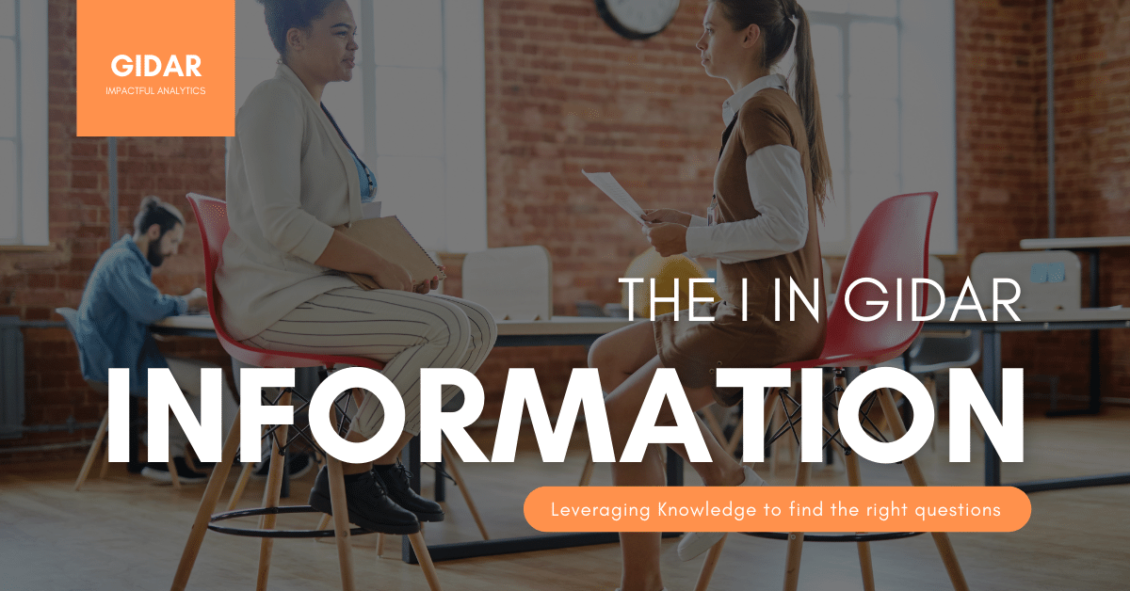Information or better said Busines Information is an essential step in the GIDAR Analtyics framework that is sadly commonly ignored by Analytics teams.
Table of Contents
The problem when you don’t use Business Information
When you get a Business Analytics request, the usual course of action for Data/Analytics/Insights teams is to jump into finding answers immediately. You send analysts and engineers to collect and analyze data when there is already much-uncovered wisdom.

What happens when you do that is that you neglect a ton of beneficial knowledge that will help you complete the project in less time and with more chances of succeeding.
What is Information in the context of GIDAR?
In this case, business information refers to context, known facts, know-how and experience from stakeholders, and subject matter experts. In one word, WISDOM. There is much wisdom in any company that for one reason or the other (called Knowledge Management in modern business) not always is surfaced.
How to acquire Business Information?
Obtaining Business Information is mostly asking, asking and asking. You need to wear your Sherlock Holmes detective hat and interrogate key business people to extract critical knowledge.

This phase’s outcome: you want to have information that helps us frame the right questions for the analysis step.
For example, if the objective is to increase sales (refer to Goals to find a detailed one), you shall approach the sales managers or the experienced salesforce. Then you will and ask them about their ideas on increasing sales or things like our audience.
This step’s objective is to find the existing information and knowledge before anything else.
Business Information Sample Questions
Some common Business Information questions people make:
- What do you know about the Goal?
- What is the business model?
- What is marketing doing?
- What are the usual complaints of the customers?
- Has it been done before? How did you do it last time?
- How will you do it?
- Where can I likely fail?
- Who knows a lot about this topic?
- Who is responsible for the actions?
- Is there any restriction or limitation?
Hint: Make sure you give credit to all your sources of information.
Why is Information sometimes more critical than Data?
I assure you that there are people that know a lot more than you in your company. Ask them! Don’t run the project in isolation. They will love to help. They will gift you with hypothesis and ideas to complement your analysis and things that you can straight include in the actions section. You don’t need to do Analytics to make common sense.
Outcome: Key Questions
By the end of this step, you will have a list of critical questions to answer with data in your analysis:
- Why “Jumpy Shoes” sales always spike in March?
- Where are our customers dropping?
- Who are the competitors of “Jumpy Shoes”?
- How does the price of “Jumpy Shoes” impact their sales?
- What can we and what can’t we do?

Do not confuse the critical questions with the Goal. The goal remains the same, but the Key Questions are a great vehicle to produce a robust analysis and actions.


2 thoughts on “The I in GIDAR Analytics: (Business) Information”
Comments are closed.